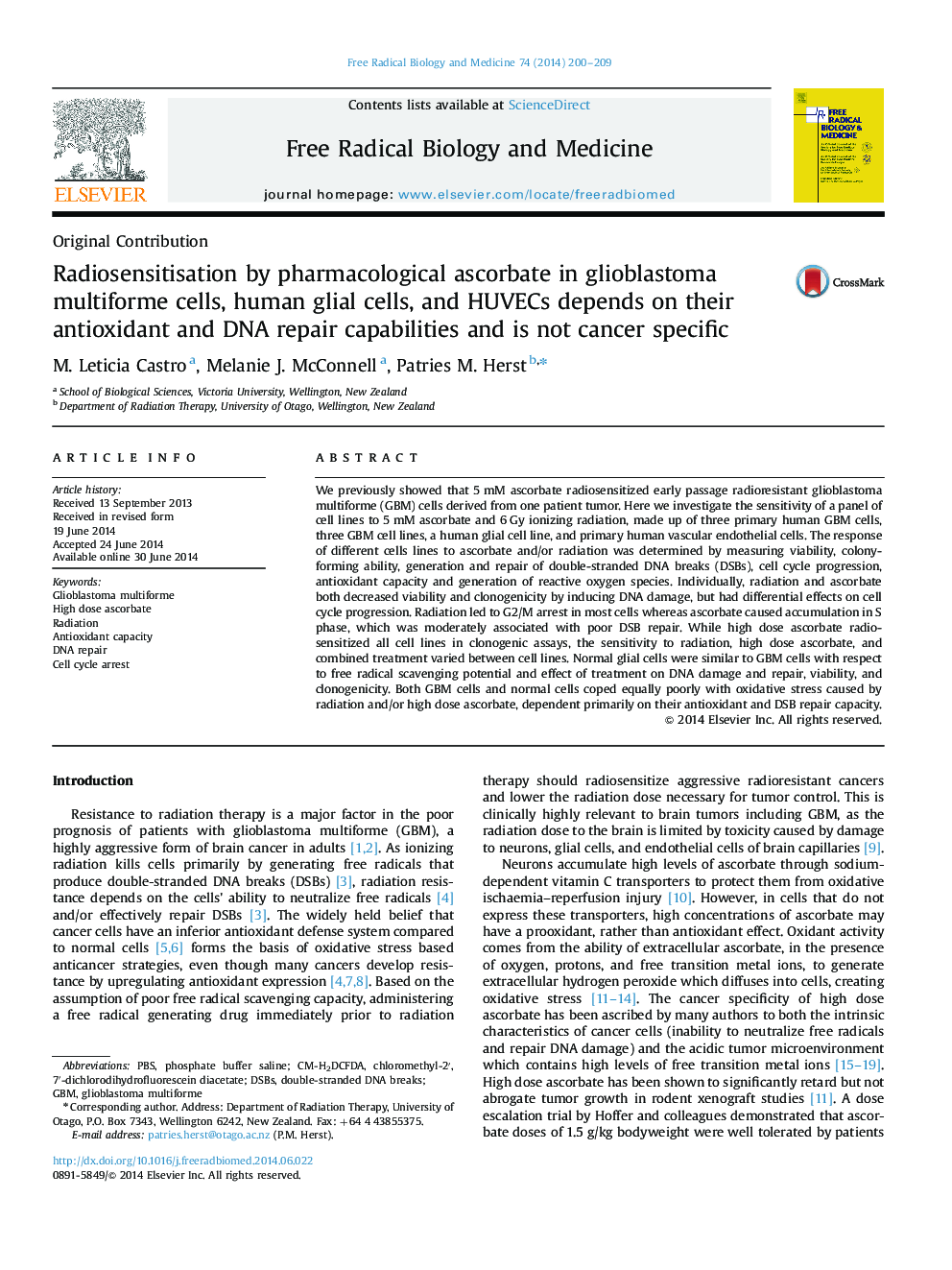| کد مقاله | کد نشریه | سال انتشار | مقاله انگلیسی | نسخه تمام متن |
|---|---|---|---|---|
| 1908305 | 1534968 | 2014 | 10 صفحه PDF | دانلود رایگان |

• Astrocytes and HUVECs were no more resistant to AA and Gy than six GBM cell lines.
• Ascorbate radiosensitized all cell lines in clonogenic assays.
• GBMs have either strong radical scavenging or effective DNA repair capabilities.
• Ascorbate profile dominated radiation profile when combined for all measures.
We previously showed that 5 mM ascorbate radiosensitized early passage radioresistant glioblastoma multiforme (GBM) cells derived from one patient tumor. Here we investigate the sensitivity of a panel of cell lines to 5 mM ascorbate and 6 Gy ionizing radiation, made up of three primary human GBM cells, three GBM cell lines, a human glial cell line, and primary human vascular endothelial cells. The response of different cells lines to ascorbate and/or radiation was determined by measuring viability, colony-forming ability, generation and repair of double-stranded DNA breaks (DSBs), cell cycle progression, antioxidant capacity and generation of reactive oxygen species. Individually, radiation and ascorbate both decreased viability and clonogenicity by inducing DNA damage, but had differential effects on cell cycle progression. Radiation led to G2/M arrest in most cells whereas ascorbate caused accumulation in S phase, which was moderately associated with poor DSB repair. While high dose ascorbate radiosensitized all cell lines in clonogenic assays, the sensitivity to radiation, high dose ascorbate, and combined treatment varied between cell lines. Normal glial cells were similar to GBM cells with respect to free radical scavenging potential and effect of treatment on DNA damage and repair, viability, and clonogenicity. Both GBM cells and normal cells coped equally poorly with oxidative stress caused by radiation and/or high dose ascorbate, dependent primarily on their antioxidant and DSB repair capacity.
Pictorial Abstract. Hypothetical mechanism of action of high dose ascorbate. High dose ascorbate generates hydrogen peroxide in the presence of protons, metal ions, and oxygen. This hydrogen peroxide diffuses into the cytoplasm and nucleus of cells and generates a number of different ROS which damage the DNA, causing cell death. Radiation directly ionizes DNA and creates ROS in both the cytoplasm and the nucleus of cells. Only free radicals (notably hydroxyl free radicals) generated in the close vicinity of DNA will cause DNA damage. Figure optionsDownload high-quality image (126 K)Download as PowerPoint slide
Journal: Free Radical Biology and Medicine - Volume 74, September 2014, Pages 200–209